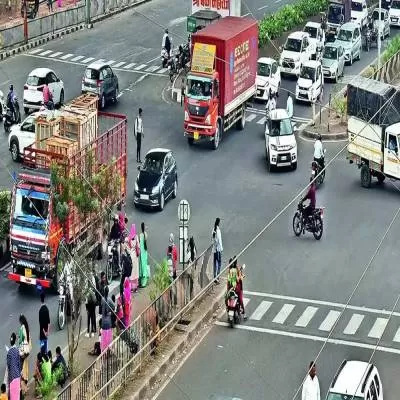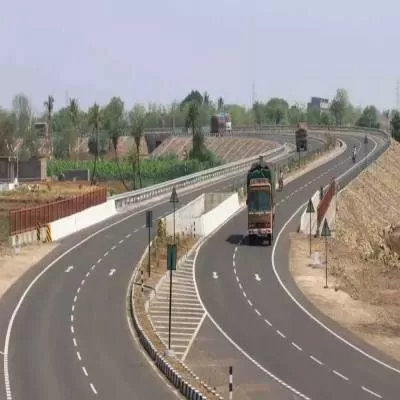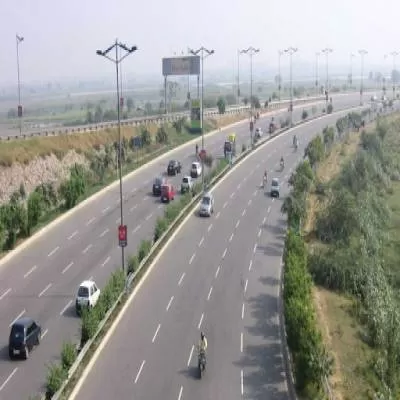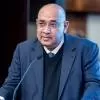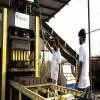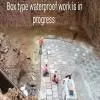- Home
- Infrastructure Transport
- ROADS & HIGHWAYS
- 7th Annual India Roads Conference 2015

7th Annual India Roads Conference 2015
The transformation of India´s roads seems to be a reality now. In February this year, the government pledged to invest Rs 80,000 crore in the sector in the Budget. And now the target is to award 10,000 km by March 2016. Also, according to a recent IBEF report, the country´s roads and bridges infrastructure, valued at $6.9 billion in 2009, is expected to touch $19.2 billion by 2017.
The government´s aggressive push is now delivering with challenges being addressed, projects being announced and private participation and foreign investment coming in. This scenario set the perfect tone for the 7th Annual India Roads Conference 2015 held in Mumbai last month with the theme ´Paving a Way for Sustainable Road Development´. Delivering the welcome address was Pratap Padode, Managing Director, ASAPP Media Information Group.
Then, the academics got into their stride with Dr Dharamveer Singh, Department of Civil Engineering, IIT Bombay, and Avijit Maji, Department of Civil Engineering, IIT Bombay, making a joint presentation on the utilisation of recycled asphalt pavement materials for sustainable construction and pavement management systems.
The presentation deliberated on the pros and cons of different building materials in India versus those in more developed markets. Participants agreed upon the need for greater interaction between industry and academia for better results in usage.
Next, a brief discussion moderated by Suneel Vora, Director, Major Projects Advisory, Infrastructure & Government Services, KPMG, delved into concretisation and maintenance of roads and highways. Shailesh Gosavi, Deputy General Manager, JSW Cement, Jaiprakash Barbhaiya, Advisor, MMRDA, and Keshav Ghodke, NHAI, shared their views on concrete roads, pointing out that with India´s extreme weather patterns, roads need to be constructed with a material that doesn´t suffer from the frailties shown by bitumen. Concrete can ably withstand high-axle loads, abrasion, aggressive pollutants and high traffic densities.
The panel also discussed maintenance expenditure and aspects such as fuel savings, wear and tear of the vehicle and use of fly-ash blended cements.This was followed by Ajay Saxena, PPP Expert and OSD, Government of Maharashtra; Bhupinder Singh Bedi, Procurement Specialist, IIFCL; Rajeev Agarwal, Superintending Engineer, Government of Rajasthan, PWD; and Guruprasad Iyer, Associate Director, CRISIL Infrastructure Advisory, discussing the PPP model for road transportation. The session was moderated by veteran journalist RN Bhaskar, Consulting Editor, Free Press Journal and Business India.
Agarwal began by talking about the characteristics of PPP, the policy environment required for its success and challenges in India. Given the wide asset liability mismatch scenarios here, he pointed out that, according to international best practices, the debt should be 80-90 per cent of the concession period. Iyer offered an overview of traditional PPP models and noted that there had been a decline in awarding PPP road projects after FY2012. Also, India ranked 76th in a list of 144 countries, below even Bhutan, Botswana and Kenya with respect to quality of roads. He informed that 3,000 km had been awarded for development so far in 2015 with 85 per cent under the EPC model. He concluded by looking forward to further developments under the new government and with the recent announcement of the hybrid annuity model (HAM). For his part, Saxena was candid in saying that despite over 10 active years of the PPP model in India, it hasn't seen much success. He questioned: Has alternative financing reached where we want it to? Has the quality of the asset increased owing to the involvement of the private sector? Citing time and cost overruns as existing bugbears, he rued that, most often, instead of implementation we are in dispute resolution mode. Tracing the problems that ensued from aggressive bidding, he emphasised that PPP would succeed only if built as a user-driven model.
Bedi pointed out that 50 per cent of PPP projects in India come from the roads sector, both by amount and number of projects. He lamented the absence of an independent regulator in the sector despite half of all PPP projects being done by roads. He also added that PPP is being used as a substitute for government spending and not a model of choice to deliver value to the customer.
The day's proceedings ended with a presentation by C Venkataramana, Director, Sunil Hitech Engineers, on the challenges faced by the industry.
Undoubtedly, the event provided an excellent opportunity for networking, deliberations and a direction for the future of the industry.
- 7th Annual India Roads Conference 2015
- IBEF
- Infrastructure
- Pratap Padode
- ASAPP Media Information Group
- Dr Dharamveer Singh
- Avijit Maji
- IIT Bombay
- Suneel Vora
- KPMG
- Shailesh Gosavi
- JSW Cement
- Jaiprakash Barbhaiya
- MMRDA
- Keshav Ghodke
- NHAI
- Ajay Saxena
- Government of Maharashtra
- Bhupinder Singh Bedi
- IIFCL
- Rajeev Agarwal
- Government of Rajasthan
- Guruprasad Iyer
- CRISIL Infrastructure
Panel discussions and presentations engaged the audience at the one-day event in Mumbai on November 5, 2015. The transformation of India´s roads seems to be a reality now. In February this year, the government pledged to invest Rs 80,000 crore in the sector in the Budget. And now the target is to award 10,000 km by March 2016. Also, according to a recent IBEF report, the country´s roads and bridges infrastructure, valued at $6.9 billion in 2009, is expected to touch $19.2 billion by 2017. The government´s aggressive push is now delivering with challenges being addressed, projects being announced and private participation and foreign investment coming in. This scenario set the perfect tone for the 7th Annual India Roads Conference 2015 held in Mumbai last month with the theme ´Paving a Way for Sustainable Road Development´. Delivering the welcome address was Pratap Padode, Managing Director, ASAPP Media Information Group. Then, the academics got into their stride with Dr Dharamveer Singh, Department of Civil Engineering, IIT Bombay, and Avijit Maji, Department of Civil Engineering, IIT Bombay, making a joint presentation on the utilisation of recycled asphalt pavement materials for sustainable construction and pavement management systems. The presentation deliberated on the pros and cons of different building materials in India versus those in more developed markets. Participants agreed upon the need for greater interaction between industry and academia for better results in usage. Next, a brief discussion moderated by Suneel Vora, Director, Major Projects Advisory, Infrastructure & Government Services, KPMG, delved into concretisation and maintenance of roads and highways. Shailesh Gosavi, Deputy General Manager, JSW Cement, Jaiprakash Barbhaiya, Advisor, MMRDA, and Keshav Ghodke, NHAI, shared their views on concrete roads, pointing out that with India´s extreme weather patterns, roads need to be constructed with a material that doesn´t suffer from the frailties shown by bitumen. Concrete can ably withstand high-axle loads, abrasion, aggressive pollutants and high traffic densities. The panel also discussed maintenance expenditure and aspects such as fuel savings, wear and tear of the vehicle and use of fly-ash blended cements.This was followed by Ajay Saxena, PPP Expert and OSD, Government of Maharashtra; Bhupinder Singh Bedi, Procurement Specialist, IIFCL; Rajeev Agarwal, Superintending Engineer, Government of Rajasthan, PWD; and Guruprasad Iyer, Associate Director, CRISIL Infrastructure Advisory, discussing the PPP model for road transportation. The session was moderated by veteran journalist RN Bhaskar, Consulting Editor, Free Press Journal and Business India. Agarwal began by talking about the characteristics of PPP, the policy environment required for its success and challenges in India. Given the wide asset liability mismatch scenarios here, he pointed out that, according to international best practices, the debt should be 80-90 per cent of the concession period. Iyer offered an overview of traditional PPP models and noted that there had been a decline in awarding PPP road projects after FY2012. Also, India ranked 76th in a list of 144 countries, below even Bhutan, Botswana and Kenya with respect to quality of roads. He informed that 3,000 km had been awarded for development so far in 2015 with 85 per cent under the EPC model. He concluded by looking forward to further developments under the new government and with the recent announcement of the hybrid annuity model (HAM). For his part, Saxena was candid in saying that despite over 10 active years of the PPP model in India, it hasn't seen much success. He questioned: Has alternative financing reached where we want it to? Has the quality of the asset increased owing to the involvement of the private sector? Citing time and cost overruns as existing bugbears, he rued that, most often, instead of implementation we are in dispute resolution mode. Tracing the problems that ensued from aggressive bidding, he emphasised that PPP would succeed only if built as a user-driven model. Bedi pointed out that 50 per cent of PPP projects in India come from the roads sector, both by amount and number of projects. He lamented the absence of an independent regulator in the sector despite half of all PPP projects being done by roads. He also added that PPP is being used as a substitute for government spending and not a model of choice to deliver value to the customer. The day's proceedings ended with a presentation by C Venkataramana, Director, Sunil Hitech Engineers, on the challenges faced by the industry. Undoubtedly, the event provided an excellent opportunity for networking, deliberations and a direction for the future of the industry.


